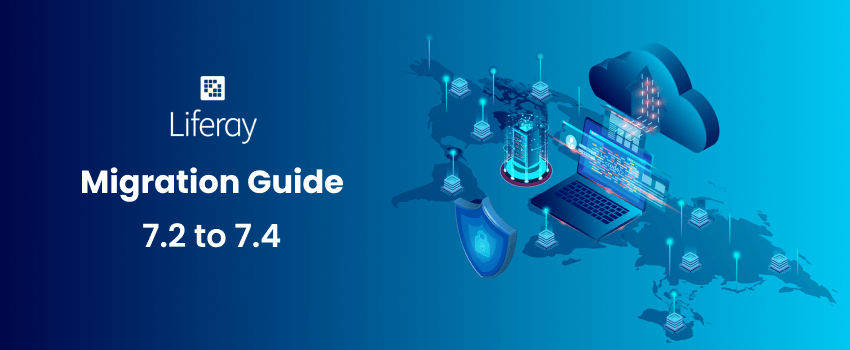Implement App Maintenance Mode with...
November 25, 2025
 Upgrading from Liferay 7.2 to Liferay 7.4 is more than just a version update it’s a strategic modernization move. Enterprises aiming to improve performance, security, and multilingual scalability are embracing this migration to build future-ready digital ecosystems.
Upgrading from Liferay 7.2 to Liferay 7.4 is more than just a version update it’s a strategic modernization move. Enterprises aiming to improve performance, security, and multilingual scalability are embracing this migration to build future-ready digital ecosystems.
According to Liferay’s official documentation, version 7.4 introduces major enhancements in content localization, headless delivery, and DXP Cloud integration. However, executing this migration in a production environment requires careful planning, stepwise validation, and post-upgrade monitoring to avoid downtime, data corruption, or localization issues.
During our real-world migration, we discovered one recurring issue that affected multilingual environments.
Important Insight:
Even though the official documentation covers most steps, it missed a crucial one: adding locale configuration properties to the portal-upgrade-database.properties file.
Without this, Arabic-to-English mapping errors surfaced during migration. Identifying the root cause required detailed log tracing and environment audits.
Lesson Learned:
If your deployment supports multilingual or right-to-left (RTL) languages like Arabic, always explicitly define locale properties in your configuration files even if not documented by Liferay.
Liferay migration refers to upgrading your existing DXP environment to the latest version to leverage newer features, improved security, and performance updates.
The Liferay 7.4 upgrade offers:
Partnering with a trusted Liferay Development Company ensures smooth transition and lower downtime during enterprise-scale migrations.
Before starting any operation, take a complete backup of your environment.
Mandatory Backups:
Stop the Liferay server.
Backup the Liferay 7.2 database.
Create a new schema for 7.4 and import your existing data.
Backup critical directories:
${LIFERAY_HOME}/data
${LIFERAY_HOME}/osgi/modules
Save configuration files such as:
portal-ext.properties
Custom configuration or environment property files.
Pro Tip: Always ensure a full backup before running the upgrade client.
Locale definition is key to a successful migration.
If your platform supports multiple languages (for example, Arabic and English), define them explicitly:
This avoids locale mismatches that can corrupt multilingual content during JSON mapping.
Best Practice:
Define locales explicitly in portal-upgrade-database.properties before initiating the migration.
Recommend Read : Liferay Search Blueprint: Improving the Search Experience
Use the database upgrade client to initiate migration:
Provide these environment configurations when prompted:
Application Server: Tomcat
Directories: bin/lib/webapps paths
Database (Oracle):
Driver Class: oracle.jdbc.OracleDriver
JDBC Protocol: jdbc:oracle:thin:@//
Credentials: Username, Password, Port, and Service Name
Liferay Home: Path to your new Liferay directory
When the migration is complete, you’ll receive a “Migration Successful” confirmation.
Next, prepare a Liferay 7.4 compatible configuration:
Steps:
portal-ext.properties from the 7.2 instance.upgrade.database.auto.run=true